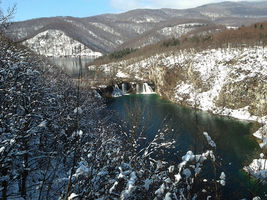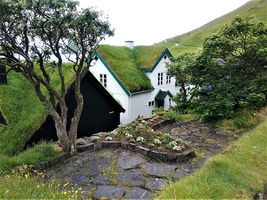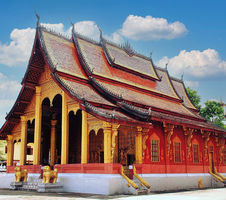
Why choose Les Baux in Provence as a blog destination? Definitely for the history and the lessons that places like this teach us. The small enclave is more than just the caves of the troglodytes. In the mountain region of Alpilles in Southern France, lavender dominates the landscape with stone cottages housing bakeries hugging the roads like a well-worn jumper. The gentle winding road resembles a slow-moving roller coaster as it sweeps and glides through the picturesque countryside. As the hills dip and soar all at the same time, you catch a glimpse of an enormous outcrop towering over another ancient town. It takes but a minute to realise that you have travelled to yet another place of significance in the French countryside.
 |  |
The medieval town of Les Baux de Provence was built by ambitious Warlords seeking to establish their power. They based themselves high up on this impregnable rock thereby taking control over the region. As a sign of their arrogance, the princes played with rhyme constructing slogans such as “A l’asar Bautesard” loosely translated meaning 'At Ransom Belchazzar'. Balthasar was said to have been one of the nobles that presented gifts to Jesus. In their eyes, they were descended from the Magi (an epiphany of Jesus Christ and magi) and so chose the Star of the Nativity as their emblem. The city suffered greatly during the many wars of the period that were decided over steel and fire. For all of the scheming and plotting of the ruling lords and princesses, there is little left today to stand testament to their reign. One of the most valuable finds was a “Colom barium” dating as far back as 3000B.C.
Whilst the Romans had extensive influence in the construction of the mountain fortress, it was eventually overrun by barbarians and the Visigoths in the 5th century, then the Burgundians and the Franks a century later.

After many changes of “owners”, the town finally submitted to Louis XI and the Crown of France in 1642. The city is made up of three parts. The village district that was built around the church of Saint Vincent today remains mostly in its original state (with some minor additions). Traders offer freshly baked bread and delectable pastries and a sense of delight in simply just being here.
Called the “dead city” Les Baux is no longer inhabited, however, outside the historic walls, you will be inspired by what you will find as you stroll the small alleyways. You can decide if some of the skeletal buildings are haunted as it is easy to see faces that may or may not be there in the smokey glass windows. A re-enactment takes place in the old village each year in the spring where you will see a 12th to 16th-century stone-thrower who could hurl up to 50kg boulders as far as 200 metres. No wonder in the Lord of the Rings everything got squashed if this is the result.
We spent almost a full day here as the history lessons just kept coming.
La Maison Du Roy- once the home of a noble is now the local Post Office. It is a central figure in the rich past of the remaining buildings. On the grand rue, the 16th-century Hotel de Brion houses the Louis Jou Foundation, a collection of prints and publications ranging from ancient manuscripts to modern art. Buy a reproduction from the printer's shop, a workshop still in use today.
Place Saint-Vincent was once an old monastery and reflects heavily on the architecture of the 11th to the 13th centuries. It is the village’s largest and most ancient church and together with the pre-Romanesque chapel holds some of the most precious ideals of its time. Rue de la Calade (the former Town Hall) overlooks the small valley of La Fontaine Santons Museum formerly the private residence of Bertrand Mocadeu, which contains a Provencal crib and a wide selection of santons- small terracotta figurines. The cribs have become so popular that a santons fair is now held each year in the city of Marseilles. The figurines are exported to the rest of France bringing funds back into Les Baux. However, this classical piece of the past has a major historical claim - the discovery of Bauxite. In a room at the Hotel De La Tour Du Brau on the rue du Trencat in 1812, hydroxide of alumina (the raw material used for the refining of aluminium) was discovered. This of course developed into one of the major industries of our time. 
Getting to Les Baux is relatively simple as it is just 25 kilometres from Avignon or 15 kilometres from Arles. Once you have reached to the top of the rocky outcrop, you are afforded views all the way to the Camargue. As with anywhere in France you simply must try the local wines, cheeses and pastries. I recommend purchasing the lavender oil from here as it is pure and will hold the scent for years.
There are many recommended hotel stays in Les Baux and at the top of my list is the exquisite Baumanerie which has 53 rooms split over 5 separate buildings. There are 2 restaurants with the L'Oustau Baumanerie boasting a 3 star Michelin certification. When it comes to surprises, I would not go past the Le Mais D'aigret. With a 3 star rating, it is so much more in presentation. I would request a room with a balcony as you can have your meals and afternoon delights brought to your room so that you can take your time to bask in the surrounding Alpilles Mountains sunshine. The Hotel suggests 'Le Mas D'aigret’s restaurant has a unique décor with exposed stone walls and a fireplace and serves traditional regional cuisine. Guests can enjoy their meal on the terrace under the mulberry plane trees and panoramic views'. I say - yes please. My suggestion for a unique experience is to book a Troglodyte double bedroom. It is another one of those bucket moments that you will not forget.
 |  |
From here you can explore all that Southern France has to offer including those I have already mentioned - Arles and Avignon. You might just be sensing your visual journey on the wonders of one of the most beautiful parts of the country. But the city does not end here with the Chateau de Les Baux and the Citadelle at the summit of the village easing us slowly back into a magical realm, a time of wars and royals and of amazing discoveries. History takes us back as far as 960 when writings first revealed how a descendant of the Magi King Balthazar built the first fortification on the mountain. If you love France then I encourage you to search Les Baux out - just like the ancients did.







